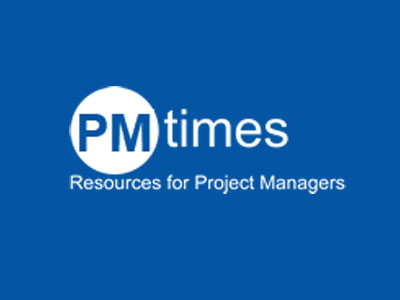Published in “Project Times” website, May, 2010
Click here for original article.
In my experience in working with multiple companies across multiple industries and globally, I’ve seen many projects succeed while others fail. Although there are countless types of projects, ranging from a new product launch project to a system implementation project, there doesn’t seem to be a pattern of success among the same type of project. Instead, I’ve discovered that one of the hidden keys to success is vision.
I’ve rarely seen this skill valued to the degree that it dictates project success. I consider this bad news and good news. The bad news is that it is one of those skills where “if you don’t see it, you typically don’t value it” which leads to a circular loop. On the other hand, the good news is that there is an opportunity to utilize this hidden key to success and dramatically improve bottom line results. So, what is vision? Read on!
Seeing the Integration Points and Impacts
This is a tough one to explain yet it never fails to drive project success. All projects have multiple integration points among departments, companies, cultures, people, processes, systems, etc. The integration points are where two items intersect. Being able to see the integration points, understand them and understand their impact is a key to success.
One integration point is the intersection of business process and systems. So, if your company is focused on improving inventory accuracy (a business process), it is vital to understand all system integration points that could affect inventory accuracy. For example, one of my clients found that understanding the down-the-line system impacts to inventory of not only all system transactions such as shipping, receiving, inventory movements, and work order entries but also the timing of the transactions and the way the transaction is performed was the key to improving inventory accuracy levels from the 60%s to the high 90%s.
In my experience, it takes a rare skill to be able to see across types of integration points. For example, some people understand systems but not how cultures intersect. Others understand cultures but not processes or cross-functional impacts. Therefore, the key to success is to be able to identify this skill, or the degree to which this skill exists in each team member, and leverage it.
Seeing the Optimal Sequencing Pattern and Impacts
In which order should you perform your project tasks? Sometimes it doesn’t matter yet other times it can make or break the project. Understanding the trade-offs associated with different sequencing options can drive project results. For example, in a change management project, we found that although each sequence of steps could deliver the project objectives, the optimal sequence delivered significantly more value to the organization. Why not take the extra time to deliver a significant return on investment?
Seeing Potential Roadblocks
What an underappreciated skill! If you have a resource who is expert at seeing potential roadblocks with plenty of time to resolve them without incident (or to build them into the plan upfront), you have a gem! Yet in my experience, these employees are overlooked as they resolve the problems before others see them. Unfortunately, it typically takes a while after they leave to see the impact since they resolved roadblocks for the foreseeable future; thus, when the process breaks down, no one can figure out what went wrong (and most likely do not relate it back to proactive removal of roadblocks).
Thus, this is a tricky one. The key is to ask questions and keep your eye out for those who are addressing roadblocks. When you find your gem, value them! Also, it is possible to focus on developing this skill in your organization. Although a training class usually cannot teach this topic fully (although problem solving and decision making training sessions cannot hurt), if you combine this type of class with mentoring, you can achieve amazing results. It can take significant time out of your leaders’ already swamped schedules; however, if you can successfully avoid a $1,000,000 roadblock (which is not uncommon), isn’t it worth the investment?
Practice improving your ability to see (vision), and emphasize and value this skill with your project team. You’ll not only deliver significant project results but you can utilize this skill in your personal life as well to achieve amazing results – why not give it a try?



